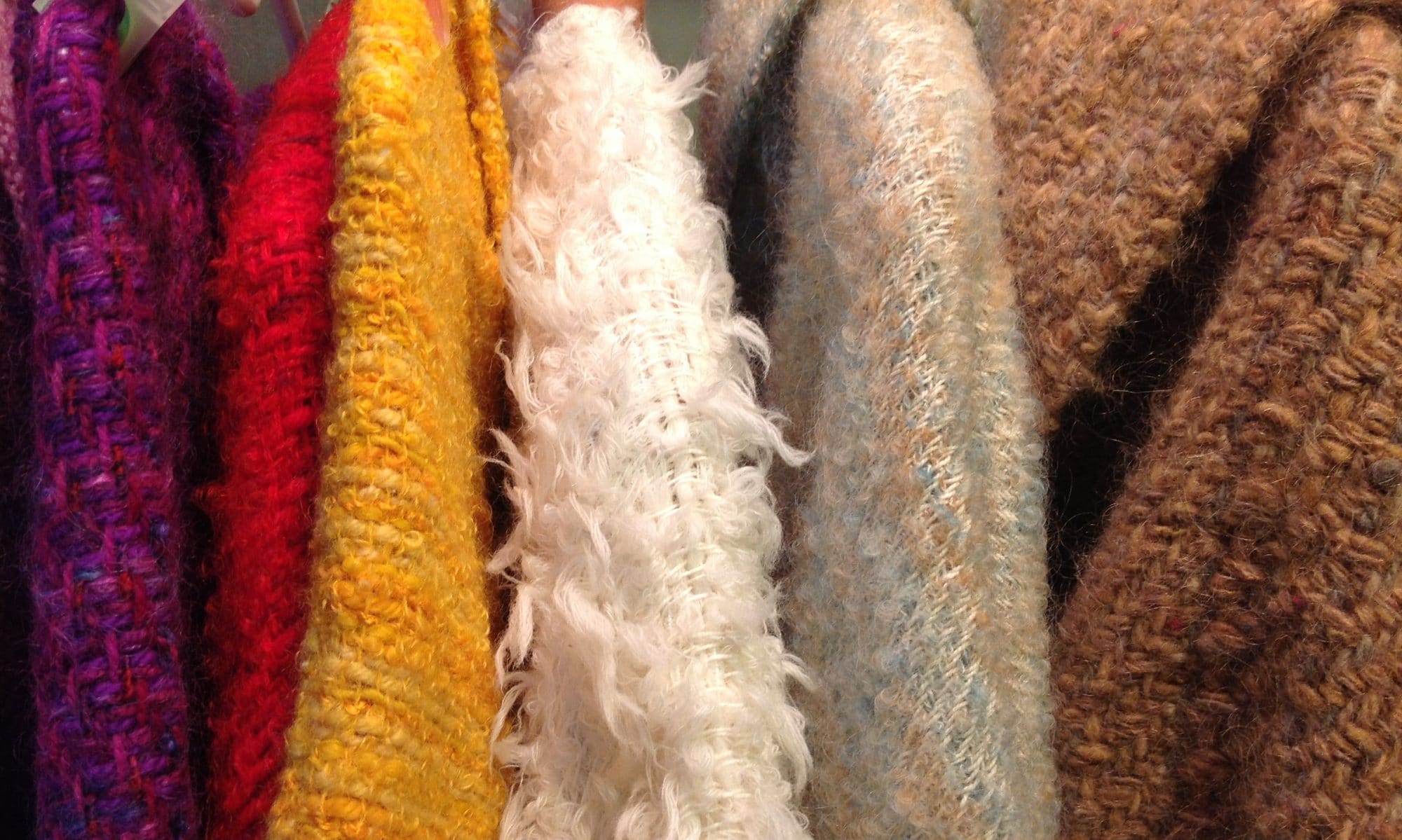I am very involved with my garden in every way, time wise, my aging body is very involved, and my finances are drawn into play as well. I could talk about my garden ad nauseum! And do! The joy it gives me. What I am planning. The new techniques I am trying. The concept of switching from “exotics” to native species. The list goes on. Today, however, I want to talk about how many basketry supplies that are to be found growing in my garden.
VINES
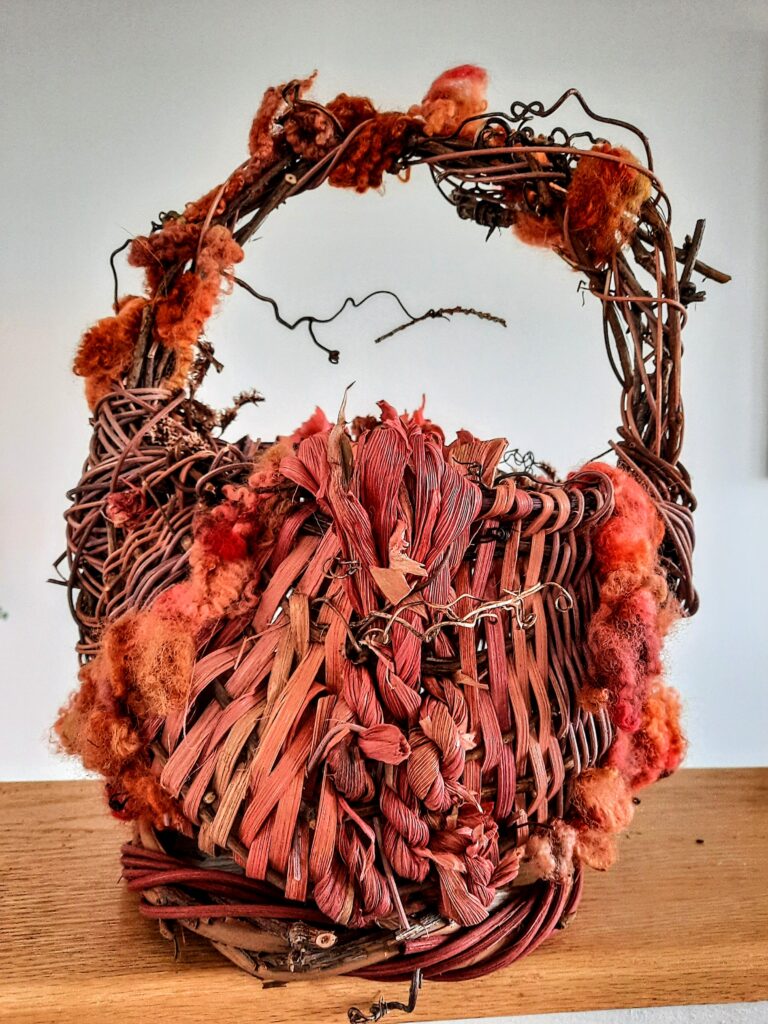
Let’s start with vines. They can be very useful in basketry, as superstructure elements in Rib Baskets, as long cores for Coiled Baskets. As a tangled element in the Random Weave Baskets, they create any shape. One of the highpoints of my garden is my Wisteria vine. It is quite an agressive plant and needs to be cut back often. Up the archway that leads to the lower half of my backyard is Bittersweet vine. Both of these vines I moved from my old house to my new house 8 years ago and they are very happy here, although I think my ‘5b’ location is at the northern limit of their climate zone. Down by the river grows wild Grapevine and Virginia Creeper. The grapevine is much stronger and especially beautiful when the bark is peeled off. The Virginia Creeper is not as strong, but it accepts dye beautifully, so I have to work a bit more carefully with it when I want vivid colours in the completed basket. Its the same as in my textile weaving, I want the warp threads to be coloured to complete the colour intensity of the completed piece. And I do love colour!
CORDAGE AND COILING
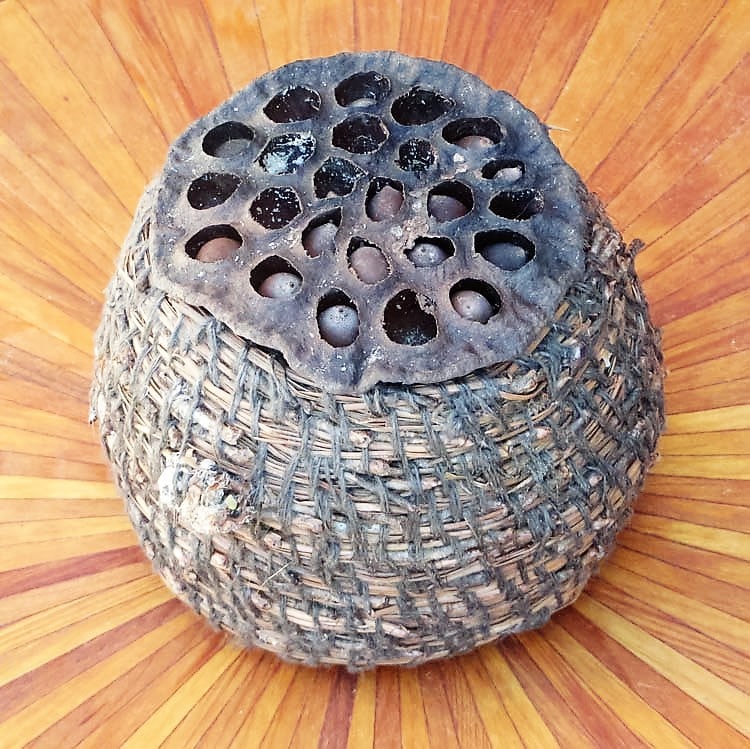
OK, moving right along to plants that supply material for cordage,. Cordage is a way to combine shorter elements to make a long rope like element. It is twisted into a 2 strand braid is the best way to describe the process My latest experiments are with daffodil stems. Yes, you read that correctly. I have so many daffodils. And after they bloom, the stems are sort of strong but squishy in the nicest possible way. They remind me of rushes (not cattails which are flat leaves) Rushes are plant stems and sedges, sedges have edges, they have sort of a triangular cross section, and have the same feel somehow as the daffodil stem, but they are much longer. (Rushes are found beside and slightly in water, unfortunately they are not common in my garden, even by the river.) I have not (yet) used dandelion stems, but I understand they too can be used in this way. Dandelions should be dried in a cool dark place until they are sort of crispy, so I have been told. Also, I love to make cordage from day lily leaves, iris leaves and corn husks. Day lily leaves have such a softly varying natural colour palette, especially when picked after the first frost and then dried. The other 2 can be dyed. and look gorgeous. Iris leaves look like silk batik and corn husks can get quite colourful. Dying plant materials can be accomplished with any dye that will work on cotton, in other words, on plant fibres not animal fibers like wool and silk. One can also use indoor plant fibres like spider plant leaves, New Zealand Flax leaves, etc. One can make cordage very even and regular, but, I like the texture and variations from less processed materials, like the adorable curl from the edge of a corn husk or New Zealand Flax peeking out from the cordage. All these cordage elements should be dried first. Then dyed. Then dried. Then rinsed. Possibly left to dry or used at this point. Then woven into a basket. They can also be braided using 3,4,5,6 etc., strands. If the cordage has dried, I soak it until it is useable, I do use daffodil stems but not the leaves as they are toxic and can cause a rash. Coiled baskets are another way to use shorter elements. Pine needles have a long tradition of being used in coiled baskets. The longest needles are nicest, but, any length can be used. There is so much online about pine needle baskets, something for every taste and skill level. Grasses! Another useful plant material for coiling especially.
OSIER AND WILLOW AND MAPLE
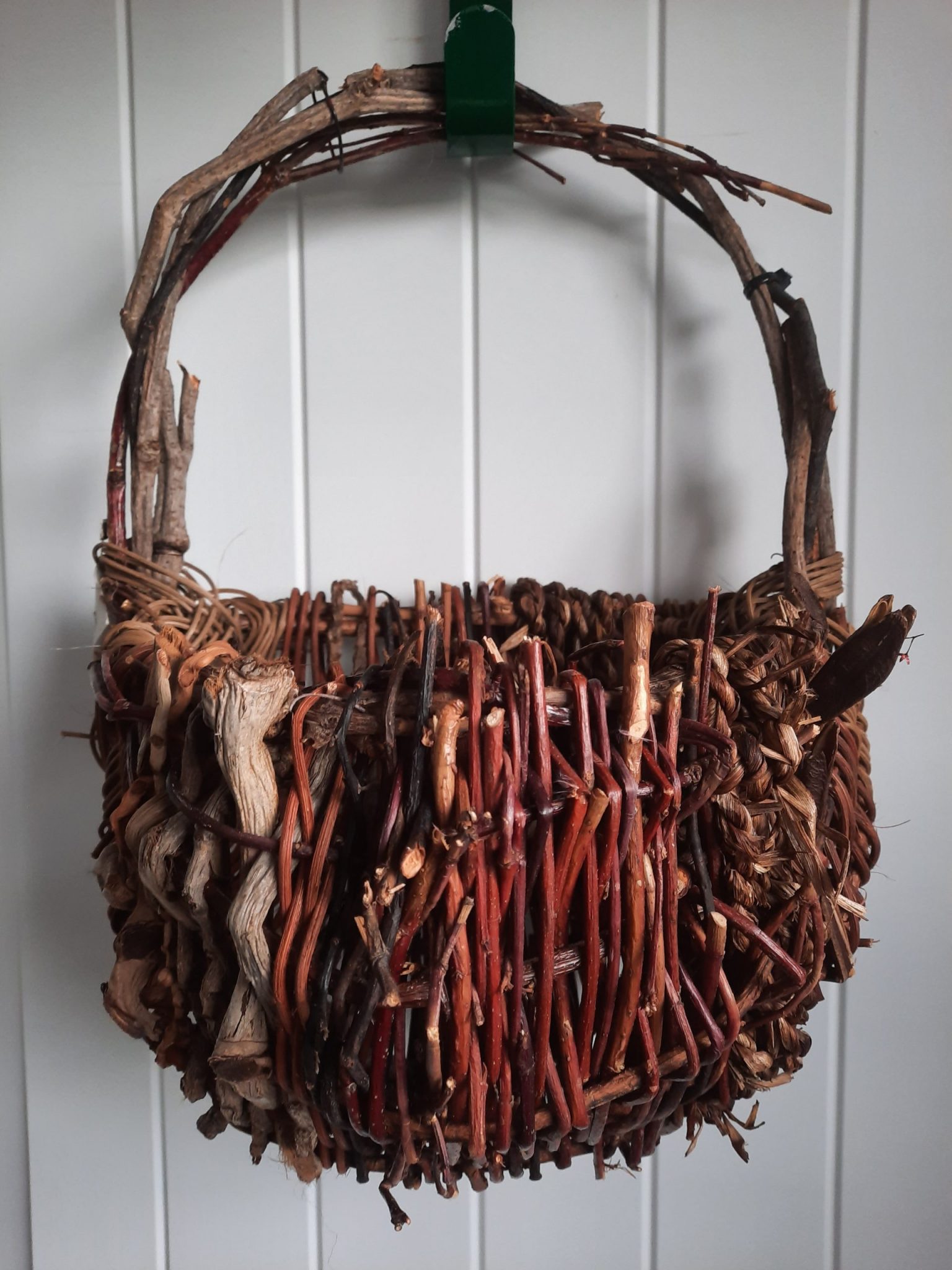
Osier, with striking red, lime green, or a soft brown stem are good for structural elements or weavers. The colours are photo sensitive, which means they turn red or lime green when the sun reaches them and then they fade to soft brown when the leaves come out and shade the stems. If picked when red or lime green, they stay that colour. Wild willows also grow nearby in vast quantities . Looking for long fine pieces is satisfying but slow. It can be used just when picked or after dried and then soaked. Warning! Do not use your bathtub to soak willow! There is quite a resultant stain. I stand them up in water in a garbage can. Willow can be gathered in the winter, when ice makes it possible to reach areas of the pond not otherwise accessible. Also, they can be used when picked (and thawed) but all green basketry materials I have been told, and have learned through experience, well, they shrink as they dry. That is why the most exact process is gather, dry, soak just enough to make the fibre useable. Oversoaking means that the fibre can dry and then shrink in your basket. It shrinks in width, not length BTW. You can add more fibres as time goes on to fill in any spaces. Maple stems can be split and used in basketry. People tell me Rose of Sharon twigs as well. If you have a stick of some kind and as you pull the ends together, it forms a nice bend, use it! Basket appropriate sticks have a spine and a belly, another clue, they will only bend one way. Weeping Willow should only be used in cordage, its not strong as Wild Willow or Cultivated Willow.
DECORATIVE ELEMENTS
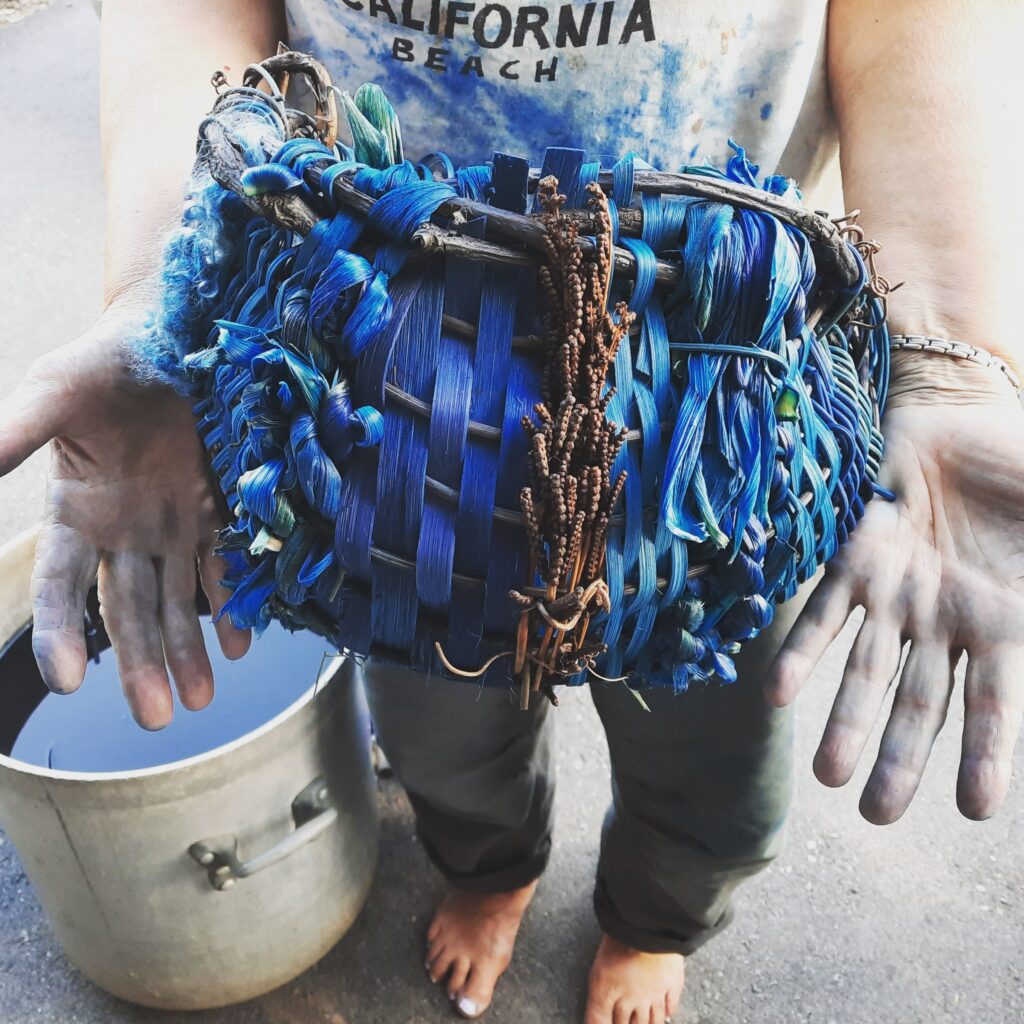
Decorative elements are a favourite aspect of Basketry Materials from the Garden for me. Just try to remember that, for example, that flower or seed pod or stem of berries never imagined they would be woven into a basket. They can be crushed or broken easily as the basket is being woven. I like to start with a live flower, let’s say daffodil, weave the stem in, weave carefully around it, then let it dry in place. Daffodil flowers dry beautifully. If things break over time, I just add something new. A feather? A bone? I have some long gorgeous porcupine quills from my time in South Africa that have been waiting for the right basket. I want to use them as uprights.
CONCLUSION
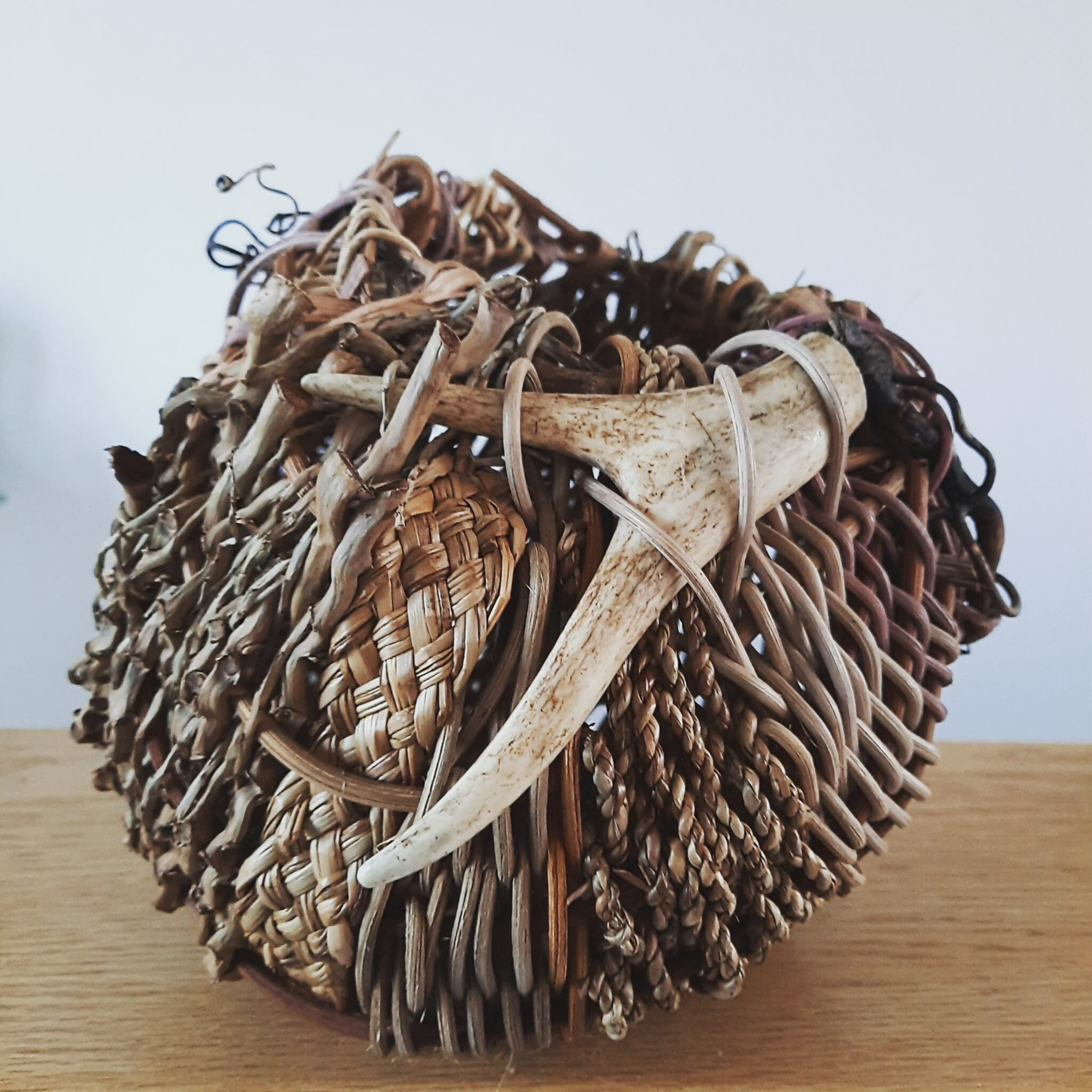
I so enjoy making baskets using foraged materials. They are suited to every kind of basket, indeed our ancestors knew just what to do with what grew all around them. Let me know what has worked for you, be relaxed, keep trying, have fun as I do. Sometimes I wish that all my time could be solely devoted to basketry.
